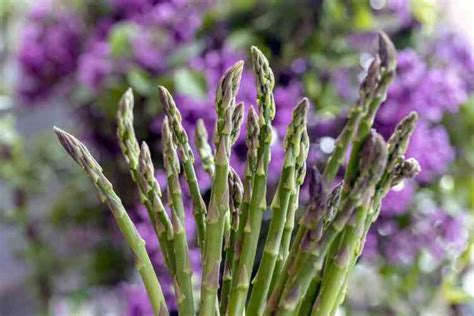Avoid Common Mistakes: Growing Asparagus in Texas
Asparagus, with its tender spears and delightful flavor, is a rewarding vegetable to grow, even in the Texas heat. However, successfully cultivating this crop requires understanding its specific needs and avoiding common pitfalls. This guide will help Texas gardeners navigate the challenges and enjoy a bountiful asparagus harvest.
What are the best varieties of asparagus to grow in Texas?
Choosing the right asparagus variety is crucial for success in Texas' diverse climate. Look for varieties known for their heat tolerance and disease resistance. 'Jersey Giant' and 'Purple Passion' are popular choices, often praised for their vigorous growth and delicious spears. Consult with your local Texas A&M AgriLife Extension office for recommendations tailored to your specific region, as microclimates can significantly influence variety selection. They can also provide information on varieties suitable for your soil type.
When is the best time to plant asparagus in Texas?
Timing is key. The ideal planting time for asparagus in Texas is during the fall (September-October) or early spring (February-March). This allows the roots to establish themselves before the intense summer heat arrives. Planting in the fall gives the crowns a head start, improving their chances of survival and a stronger yield the following year. Avoid planting during the hottest months (June-August) as the young plants are highly susceptible to heat stress and may not survive.
How to prepare the soil for planting asparagus?
Asparagus thrives in well-drained, sandy loam soil rich in organic matter. Before planting, conduct a soil test to determine its pH and nutrient levels. Asparagus prefers a slightly acidic to neutral pH (6.0-7.0). Amend the soil with compost or other organic matter to improve drainage and fertility. Heavy clay soils should be amended with sand to improve drainage, preventing root rot, a common issue in poorly drained soils. Good soil preparation is fundamental for a healthy and productive asparagus patch.
What are some common problems when growing asparagus in Texas?
Several challenges can hinder asparagus growth in Texas:
Heat Stress: Texas summers can be brutal. Provide adequate shade, especially during the hottest part of the day, to protect young plants. Mulching helps maintain soil moisture and moderate soil temperature.
Disease: Asparagus rust is a significant concern in humid areas. Choose disease-resistant varieties and ensure good air circulation within the rows to minimize the risk of fungal diseases.
Pests: Asparagus beetles can be a nuisance. Regularly inspect plants for signs of infestation and consider using organic pest control methods, such as handpicking beetles or introducing beneficial insects.
How much water does asparagus need?
Consistent watering is essential, especially during the establishment phase and throughout the growing season. Aim for deep, infrequent watering rather than shallow, frequent watering to encourage deep root growth. Mulching helps retain soil moisture and reduce the frequency of watering. During prolonged dry spells, increase watering frequency. Monitor soil moisture to prevent both overwatering and underwatering, ensuring a consistent supply of moisture without waterlogging.
How long does it take for asparagus to mature?
Asparagus requires patience. It takes two to three years for a newly planted crown to reach full maturity and produce a substantial harvest. During the first year, focus on establishing a strong root system. Harvest lightly during the second year, and then enjoy a full harvest from the third year onwards. Be patient, and you'll be rewarded with years of delicious asparagus spears.
What are the best fertilization practices for growing asparagus in Texas?
Fertilize asparagus plants annually to maintain soil fertility and support healthy growth. A balanced fertilizer, such as 10-10-10, is suitable. Apply the fertilizer in early spring before new growth begins. A soil test can help determine specific nutrient needs. Avoid over-fertilizing, as this can lead to excessive vegetative growth at the expense of spear production.
This comprehensive guide provides Texas gardeners with the knowledge to successfully cultivate asparagus. Remember to consult with your local Texas A&M AgriLife Extension office for specific recommendations tailored to your area. With careful planning and attention to detail, you can overcome common challenges and enjoy the fruits (or spears!) of your labor.

